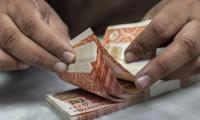Increasing channel access through B2C mobile payments – particularly in economies where a majority of the population is unbanked – is critical to promote financial inclusion. By utilising this platform, corporations, banks, telecom companies and other industry participants can tap vendors at the grassroots level via mobile money.
This new technology strengthens outreach in areas that lack access to basic financial services. Using mobile money equips corporations with an additional channel to guarantee the instant transfer of payments to unbanked vendors. Enhanced penetration provides a host of financial services by leveraging technology and advancing financial inclusion.
By onboarding the unbanked onto this channel, a number of individuals have the benefit of becoming equipped with financial literacy. This ultimately translates into efforts to financially empower individuals and contribute towards their financial sustainability. The importance of such platforms is often overlooked and, if utilised effectively, can further strengthen the mobile money ecosystem.
By developing direct contact with vendors, B2C mobile payments facilitate corporations and enable them to reap the benefits of a value chain sourced with reliable suppliers. This mechanism can serve as an effective platform to communicate pivotal information, which ultimately results in enhanced loyalty from the vendor base and serves to provide critical inputs to the business.
Payments through this medium capture visibility on the flow of transactions on a real-time basis – a key feature that is not prevalent with cash payments. This contributes towards strengthening internal controls and operating procedures and also improves governance in any business.
In the era of big data, linking the B2C ecosystem with mobile money has the ability to instantaneously generate, capture and store data. The integration of different systems can incorporate the data generated to formulate a comprehensive database. The output can then be leveraged in order to develop an insight into varied trend analysis and behavioural patterns. The results can be utilised towards new product development and can further be customised to suit the requirements of the target base.
In addition, this data can highlight the gaps that need to be filled for the inclusion of individuals into the mobile money ecosystem.
While it is simpler in terms of product usage and implementation, transitioning to mobile money also presents its own set of challenges in terms of incorporation and integration into the B2C space. Channelling such payments requires a change from legacy systems to those that can adapt to the changing technologies. This entails tailoring operational models to cater to new processes, streamlining standard operating procedures and developing a mindset that focuses on implementing change in line with developments in the financial technology space.
Models that enable the outreach of mobile money currently operate outside traditional banking structures and exhibit exorbitant transactional costs. This often creates a barrier in terms of affordability for the end user. Traditional banking models that have been operating for decades have gained from economies of scale and are, thus, in a better position to offer competitive rates on transactions.
However, there is a dire need for all industry participants, including banks, to work together from an inter-operable platform to offer services with reduced transaction costs. Further facilitation can be brought in through increased regulatory support and can act as a catalyst in creating a roadmap to build such an environment.
The benefits of utilising the B2C channel to include the unbanked into the mobile money ecosystem often outweigh the challenges. Collaboration among all industry participants, including corporations, is the course towards financial inclusion in the mobile money ecosystem.
The writer is a digital financial services expert and investment specialist.
An aeroplane of the national flag carrier of Pakistan is seen in this file photo. — AFPWhile Pakistan considers...
Representational image of a graph depicting various variables. — APP/FileInitiated by the centre and fiercely...
In this picture taken on April 16, 2023, people throng a market area during shopping in Lahore. — AFPOne of the...
Honour crimes also target men. In Sikandar Ali Lashari vs The State, SHC upheld conviction passed by ATC for honour...
If Sindh earmarks Rs20 million per police station, it will cost only Rs10 billion to make them effective first...
A complex and difficult policy environment seems to be highlighted by US’s recent application of sanctions on...







